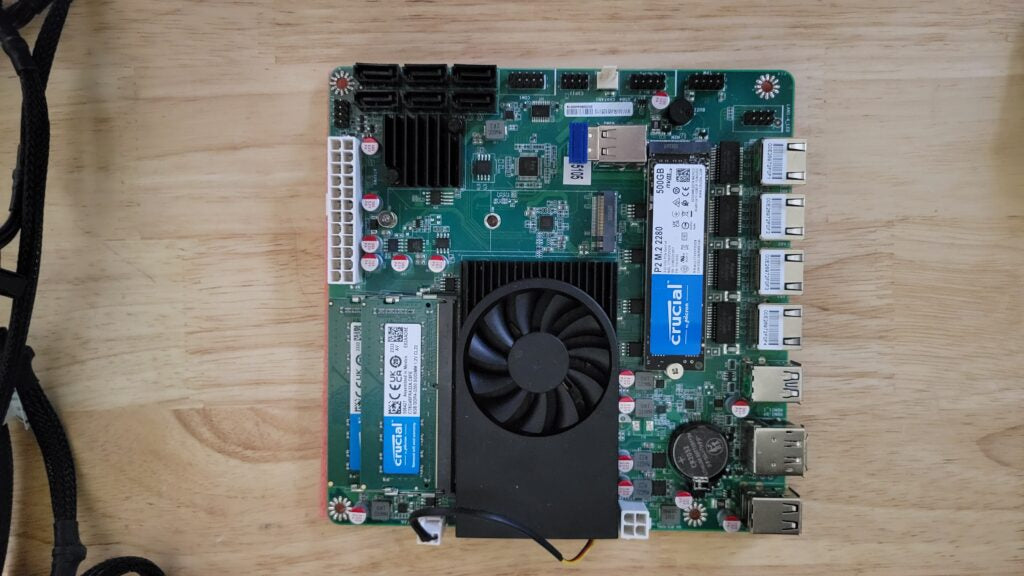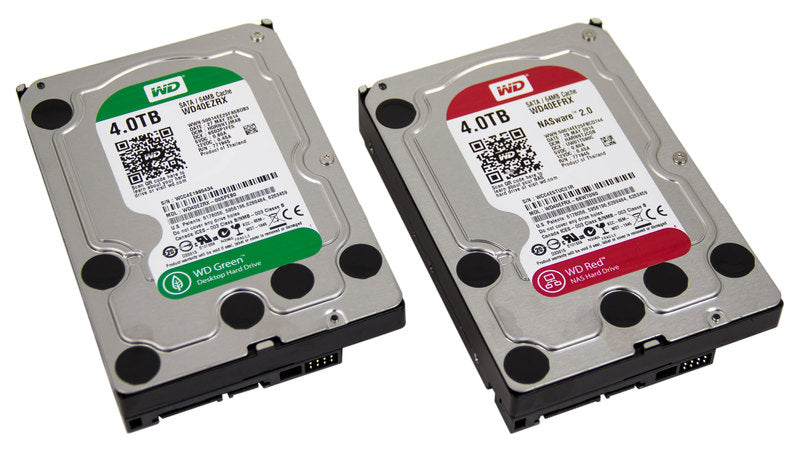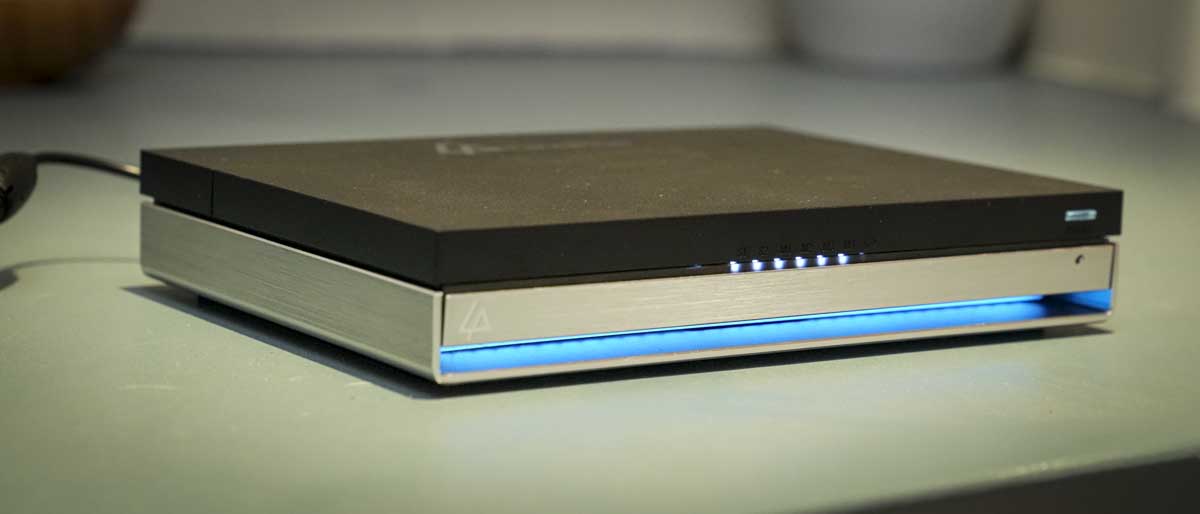Introduction: Why Your NAS Motherboard Matters
A Network Attached Storage (NAS) system is the backbone of home labs, media servers, small businesses, and data hoarders worldwide. While storage capacity often steals the spotlight, the real unsung hero is the motherboard for NAS. This component determines the number of drives you can use, your network speed, energy consumption, upgrade paths, and overall system reliability.
If you're searching for the best NAS motherboard, the best low power NAS motherboard, or simply a good mainboard for NAS, this comprehensive guide is for you.
We will explore:
- What makes a great NAS motherboard
- The best motherboards for NAS in 2025
- Whether you should go DIY or prebuilt
- How the LincStation N2, an energy-efficient 10GbE NAS solution, compares to DIY builds
Why the Motherboard is Critical for NAS Performance
A NAS motherboard isn't just a place to plug in drives. It directly affects:
- 🏗️ Storage Capacity: SATA and M.2 slots determine how many drives you can run.
- ⚡ Power Efficiency: Low-power chipsets save money on electricity and reduce heat.
- 🌐 Network Speed: Faster LAN ports (2.5G/10G) = faster file transfers and backups.
- 🔧 Expandability: PCIe slots allow adding network cards, NVMe expanders, or HBA cards for more drives.
- 🔐 Data Integrity: ECC memory support protects against data corruption in ZFS and enterprise setups.
Put simply: choosing the right motherboard is the difference between a slow, limited NAS and a fast, future-proof data hub.
What Makes the Best NAS Motherboard?
Key Features
1️⃣ Ample Storage Interfaces
- Minimum 4× SATA3 for HDD/SSD. Some boards offer 6–8.
- At least 1× M.2 NVMe slot for cache, apps, or OS.
2️⃣ Power Efficiency
- Look for motherboards using Intel Alder Lake-N (N100/N97), or low-power Ryzen Embedded processors.
- Less than 15W idle power is ideal for 24/7 usage.
3️⃣ High-Speed Networking
- Avoid single 1G LAN. Prioritize boards with 2.5GbE, and ideally 10GbE.
- Multiple LAN ports enable link aggregation for redundancy and speed.
4️⃣ PCIe Expansion Options
- At least 1× PCIe x4 or x16 slot to add NICs, RAID/HBA controllers, or NVMe expanders.
5️⃣ ECC RAM Support (Optional)
- Crucial for ZFS-based systems (e.g., TrueNAS).
- Intel Xeon or AMD Ryzen Pro boards support ECC RAM.
6️⃣ Compact Form Factor
- Mini-ITX: Small, energy-efficient, quiet builds.
- Micro-ATX: More expansion, more PCIe slots, but larger.
Best NAS Motherboards in 2025: Top Picks
| Motherboard | CPU/Chipset | Key Features | Why It’s Great for NAS |
|---|---|---|---|
| ASRock Rack C256WS | Intel W680 | ECC support, 8 SATA, dual 10GbE, PCIe x16 | Enterprise NAS, ZFS, virtualization |
| Supermicro X12STH-F | Intel Xeon E-2300 | ECC, IPMI remote mgmt, 6 SATA, PCIe | Rock-solid reliability, server-grade |
| ASUS Prime B660I-AX | Intel B660 | 4 SATA, 1 M.2, Wi-Fi, 2.5GbE, PCIe x16 | Budget-friendly compact NAS |
| Gigabyte B760I Aorus Pro DDR5 | Intel B760 | 4 SATA, 2 M.2, PCIe 4.0, 2.5GbE, Wi-Fi | High-speed NVMe, future-proof connectivity |
| ASRock N100M | Intel Alder Lake-N100 | 4-core, 6W TDP, 4 SATA, 1 M.2, 1 PCIe, fanless ready | Low power NAS motherboard, ultra-silent build |
| Jetway NF834 | Intel N97 Embedded | Fanless, 6 SATA, 2.5GbE, 1 PCIe | Silent, efficient mainboard for NAS |
Low Power NAS Motherboards: The 2025 Trend
With energy costs soaring and home labs growing, the demand for low power NAS motherboards has exploded.
✅ Intel N100/N97 (Alder Lake-N)
- 4 cores / 4 threads, up to 3.4GHz
- 6W TDP — runs cool and quiet
- Handles file sharing, Plex with hardware transcoding (Quick Sync), Docker containers
- Perfect for 24/7 uptime in silent enclosures
These processors now power both DIY boards like ASRock N100M and compact systems like the LincStation N2.
LincStation N2: The Prebuilt NAS Done Right
Why struggle with compatibility and BIOS tuning when the LincStation N2 solves it all?
🔥 LincStation N2 Specs:
- CPU: Intel Alder Lake-N100 (4C/4T, 3.4GHz, 6W TDP)
- RAM: 16GB LPDDR5 (onboard)
- Storage:
- 2× SATA 2.5" HDD/SSD (9.5mm thickness)
- 4× M.2 NVMe 2280 SSDs
- 128GB eMMC (OS)
- Networking: 10GbE RJ45 (built-in)
- Ports:
- USB-C (10Gbps), USB3.2, 2×USB2.0
- HDMI 2.0
- Audio Out (3.5mm)
- Power: 12V5A (ultra-low consumption)
- Size: 210×152×39.8mm | Weight: 800g
🏆 LincStation N2 vs DIY NAS Motherboards
| Feature | LincStation N2 | DIY NAS (ASRock N100M) |
|---|---|---|
| CPU | Intel N100 (4C/4T, 6W) | Intel N100 (4C/4T, 6W) |
| Network | 10GbE (Built-in) | 1G/2.5G (10GbE requires PCIe upgrade) |
| SATA | 2x 2.5" HDD/SSD | 4x SATA3 |
| NVMe | 4x M.2 NVMe | 1x M.2 NVMe |
| RAM | 16GB LPDDR5 (Fixed) | 8–32GB DDR4/DDR5 (Upgradeable) |
| PCIe | None (Compact, fully integrated) | 1x PCIe x16 |
| Size | Ultra Compact (210×152×39.8 mm) | Mini-ITX (dependent on case, e.g., Jonsbo) |
| Power | 10–15W | 15–25W |
| Assembly | Plug-and-play | DIY: Assembly + BIOS setup |
| Price | Competitive (includes 10GbE + NVMe) | Lower upfront, but add-ons for 10GbE/NVMe |
DIY NAS Motherboard vs Prebuilt NAS: Which Is Best?
✔️ DIY NAS Motherboard Is Better If:
- You enjoy tinkering with hardware
- Need ECC RAM for ZFS
- Want PCIe expansion for extra drives, GPUs, or 10GbE
- Prefer flexibility in RAM upgrades
✔️ LincStation N2 Is Better If:
- You value plug-and-play simplicity
- Need 10GbE out-of-the-box (no expansion cards required)
- Prioritize low noise, low power, and a small footprint
- Want hassle-free NAS with modern storage (4 NVMe SSDs + SATA)
Future Trends: NAS Motherboards in 2025 and Beyond
- 💡 More NVMe-focused builds: Speed and size efficiency.
- 💡 10GbE becomes mainstream: As seen in LincStation N2.
- 💡 Passive cooling designs: Thanks to low TDP CPUs like Intel N100/N97.
- 💡 Rise of hybrid prebuilt NAS: Compact, low-power, yet powerful—blurring the lines between DIY and enterprise.
Conclusion: The Best Motherboard for NAS in 2025
If you're building your own NAS, a good NAS motherboard should balance:
- Low power usage
- Adequate storage ports
- Fast networking (2.5G or 10G)
- PCIe expandability (if needed)
DIY motherboards like ASRock N100M, ASUS B660I, or server-class boards like ASRock Rack C256WS offer excellent flexibility.
However, if you prefer a ready-to-go system with future-proof features like 10GbE, 4× NVMe SSD slots, and whisper-quiet power consumption under 15W, the LincStation N2 stands out as one of the smartest NAS solutions in 2025.




Leave a comment
All comments are moderated before being published.
This site is protected by hCaptcha and the hCaptcha Privacy Policy and Terms of Service apply.